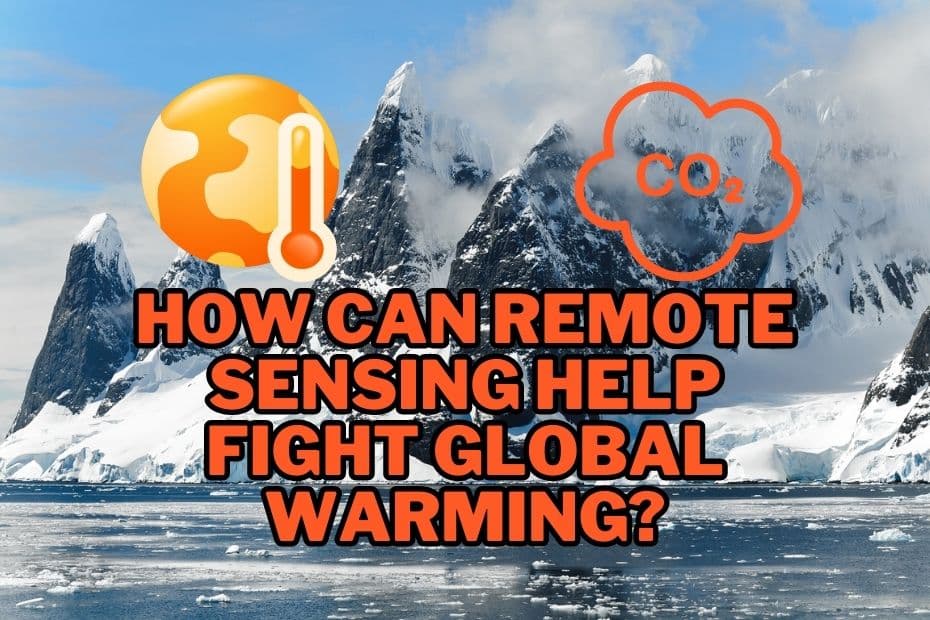Global warming has become a major concern for our planet, and it is essential to find ways to mitigate its impact. Remote sensing is a process of gathering information about the earth’s surface and atmosphere from a distance, using satellites, aircraft, and other sensors. In this article, we will explore how can remote sensing help fight global warming, and its applications in monitoring and managing climate change.
Remote sensing can provide valuable information on carbon dioxide emissions, land use and land cover changes, climate change, natural disasters, and renewable energy, which can help in developing strategies to mitigate the impact of global warming.
Introduction
The rise in global temperatures has caused several environmental problems, such as melting of glaciers, rising sea levels, and extreme weather conditions. The increase in carbon dioxide emissions due to human activities has contributed significantly to global warming. Remote sensing can help in monitoring and managing climate change by providing valuable data on the earth’s atmosphere and surface.
Understanding Remote Sensing
Remote sensing involves the collection of data about the earth’s surface and atmosphere from a distance. It uses various technologies, such as satellites, aircraft, and ground-based sensors, to gather information. Remote sensing data can be used to study changes in land use, vegetation cover, water resources, and the earth’s atmosphere.
Remote Sensing Applications
Remote sensing has several applications, including:
- Monitoring and managing natural resources such as forests, water, and wildlife.
- Mapping land use and land cover changes.
- Detecting and assessing the impact of natural disasters such as floods, earthquakes, and wildfires.
- Monitoring weather conditions and predicting natural hazards.
- Studying climate change and its impact on the earth’s atmosphere and surface.
How Can Remote Sensing Help Fight Global Warming?
Remote sensing can provide valuable information on the earth’s atmosphere and surface, which can help in mitigating the impact of global warming. Here are some ways in which remote sensing can help fight global warming:
#1. Monitoring and Managing Carbon Dioxide Emissions
Remote sensing can be used to monitor and manage carbon dioxide emissions from various sources, including power plants, factories, and transportation. Satellites equipped with infrared sensors can detect the presence of CO2 in the atmosphere and measure its concentration.
This information can be used to identify the sources of CO2 emissions and to track changes over time. By monitoring CO2 emissions, policymakers and industry leaders can make informed decisions about reducing emissions and mitigating the impact of global warming.
#2. Mapping Land Use and Land Cover Changes
Remote sensing can provide information on changes in land use and land cover, such as deforestation, urbanization, and agricultural expansion.
The conversion of forests and other natural habitats into agricultural land, urban areas, and other human-made landscapes is responsible for a significant amount of greenhouse gas emissions.
#3. Studying Climate Change
Remote sensing can monitor changes in the earth’s atmosphere, such as temperature, humidity, and the concentration of greenhouse gases. This data can help in studying climate change and its impact on the earth’s surface.
By analyzing satellite imagery and other data, scientists can track changes in temperature, precipitation, and other climate variables over time.
#4. Monitoring Natural Disasters
Remote sensing can detect and assess the impact of natural disasters such as floods, earthquakes, and wildfires.
This information can also be used to identify areas that are particularly vulnerable to future natural disasters and to develop strategies to reduce the risk of damage.
#5. Improving Renewable Energy
Remote sensing can help in identifying suitable locations for renewable energy sources such as solar and wind power. Solar and wind energy are important sources of renewable energy, but they are also subject to weather patterns and other environmental factors.
This information can help in reducing the use of fossil fuels and mitigating the impact of global warming.
Conclusion
Remote sensing is a valuable tool in monitoring and managing climate change. It can provide valuable information on the earth’s surface and atmosphere, which can help in developing strategies to mitigate the impact of global warming. With the increasing concern about the impact of global warming, remote sensing technology is becoming increasingly important.
READ MORE:
- 15+ Best Remote Sensing Software
- List of Indian Remote Sensing Satellites
- 11+ Importance of Remote Sensing in Agriculture
FAQs: How Can Remote Sensing Help Fight Global Warming?
What are some applications of remote sensing?
Some applications of remote sensing include monitoring and managing natural resources, mapping land use and land cover changes, detecting and assessing natural disasters, monitoring weather conditions, and studying climate change.
How can remote sensing help in improving renewable energy?
Remote sensing can identify suitable locations for renewable energy sources such as solar and wind power, which can help in reducing the use of fossil fuels and mitigating the impact of global warming.
